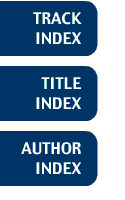
Track: Water Resources
Using GIS for Planning and Water Management of Southern Egypt Development Project

Nagy G. R. YakoubDr. Mona El-Kady
The main source of fresh water in Egypt is the Nile River with a limited discharge of 55.5 billion cubic meters/year, and most of this source's water is already allocated. In addition to the Nile River, there is a big potential of deep groundwater in Egypt, specially in the Western Desert Oases and East Oinat area, and only a small portion of this groundwater is used. Because of the limitation of freshwater in Egypt and the expected increase of population in the next decades, an increase in future water demand is expected. A series of national-level projects is designed to conserve water such as the irrigation improvement projects, the reuse of drainage water, the rehabilitation of existing irrigation structures, and several projects to reduce water consumed on the farm level. Conserved water may be used in new land reclamation and development projects such as the Southern Egypt development project. The Southern Egypt development project has an integrated scheme that includes, in addition to land reclamation, other activities such as agriculture products industry, mining industry, and tourism. This would require the construction of canals, drains, roads, electrical networks, new cities and villages, and domestic and sewage networks. The horizontal land expansion consists of two parts. The first part is the area that will be cultivated on Sheikh Zayed Canal with a total of 477,000 feddan. The canal would get its water supply from Lake Naser through a huge pumping station with a total discharge of five billion cubic meters/year. The second part is concerned with the development of the Western Desert Oases and East Oinat on deep groundwater, and about 500,000 feddan will be cultivated in groundwater in the first phase of the project. The objective of this paper is to present and analyze the important role of GIS in the Southern Egypt development project starting from the planning stage. The geographic layers containing the topography of the area and the hydraulic characteristics of the lake would determine the canal intake pump station location. The layers of topography and soil classification would determine the path of Sheikh Zayed Canal and its four branches, the areas to be cultivated, and new roads. In addition to soil classification, the layers of climatic conditions of the area such as temperature, relative humidity, rainfall, evapotranspiration rate, and wind velocity would determine the suitable crops for the area and the water requirements for each location. Other geographic layers employed in the Southern Egypt development project include the layers of existing cultivated areas in the Oases and its water requirements and population, existing roads, and present groundwater wells locations. The GIS is one of the tools used to control and organize the flood of information needed to assist the decision makers in planning and water management of the Southern Egypt development project.
Nagy G. R. Yakoub
National Water Research Center
Fum Ismailia Canal
Cairo, 13411
EGYPT
Telephone: (202) 222-6762
Fax:
E-mail: nwrc@idsc.gov.eg